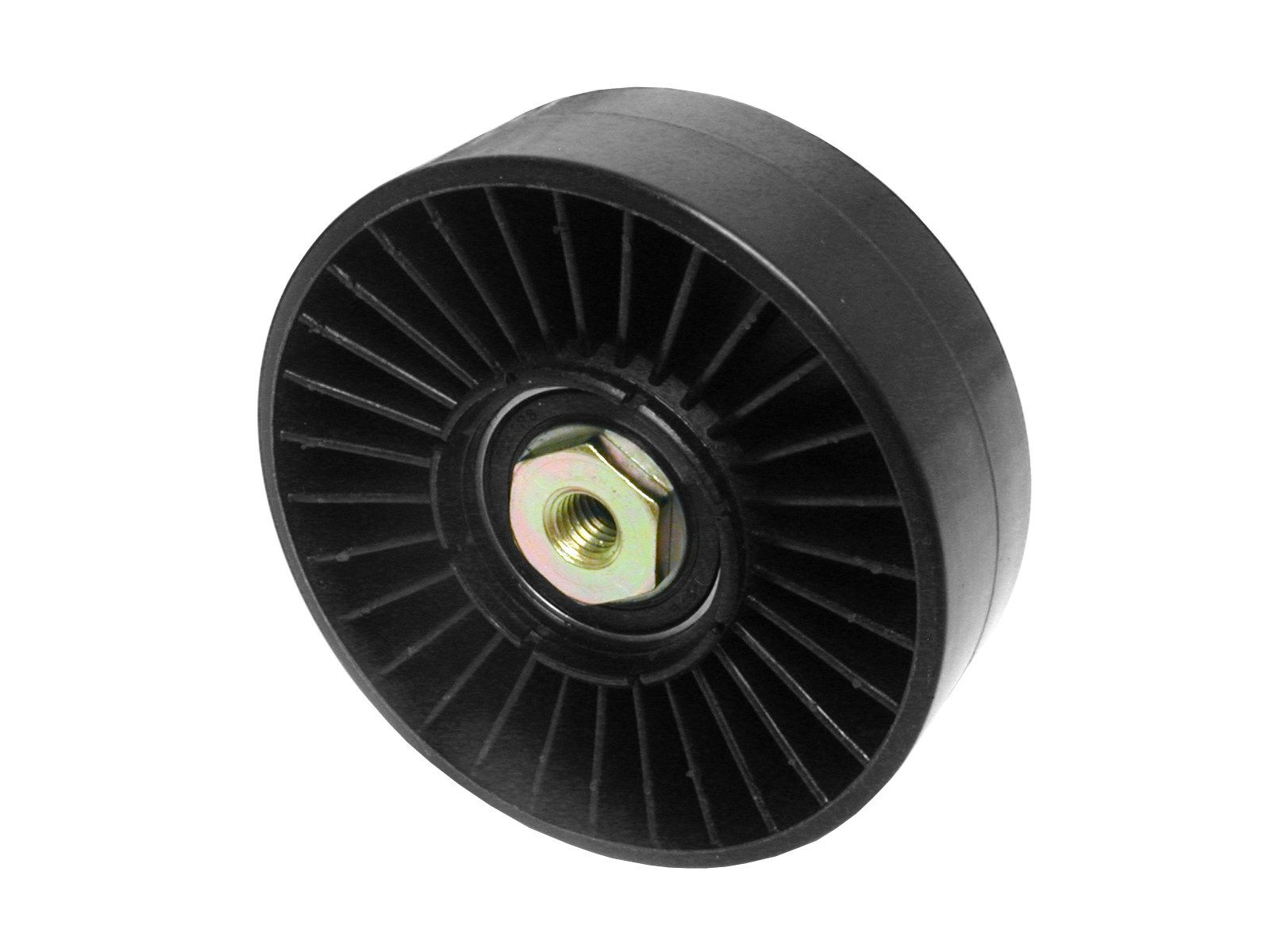-29%
Get Belt Tensioner Pulley Volkswagen Cabrio III/Golf III/Jetta III/Passat B4 028145278E
The belt tensioner pulley is a crucial component in a vehicle’s engine accessory drive system. It ensures that the drive belt remains under proper tension, facilitating the smooth operation of various engine components such as the alternator, power steering pump, and air conditioning compressor. Understanding the structure, function, types, benefits, common issues, and maintenance of belt tensioner pulleys is essential for maintaining engine performance and reliability.
Structure and Function of Belt Tensioner Pulleys
The belt tensioner pulley works in conjunction with the belt tensioner to maintain the correct amount of tension on the drive belt. This is critical for the efficient operation of engine accessories.
Components of a Belt Tensioner Pulley
- Pulley: The grooved wheel that guides and maintains tension on the drive belt.
- Bearing: Allows the pulley to spin smoothly with minimal friction.
- Spring Mechanism: Provides the necessary force to keep the belt tight.
- Tensioner Arm: Connects the pulley to the tensioner base and houses the spring mechanism.
- Mounting Bracket: Attaches the tensioner assembly to the engine.
Function in the Drive System
The primary functions of the belt tensioner pulley include:
- Maintaining Belt Tension: Ensures the drive belt remains at the correct tension, preventing slippage and ensuring efficient power transmission to engine accessories.
- Reducing Vibration: Minimizes belt vibrations and oscillations, leading to smoother engine operation.
- Compensating for Belt Wear: Adjusts tension automatically to compensate for belt stretch and wear over time.
- Guiding the Belt: Helps align the belt properly on the pulleys of various engine accessories.
Types of Belt Tensioner Pulleys
Belt tensioner pulleys come in various types, each designed to suit different engine configurations and performance requirements.
Manual Tensioner Pulleys
Manual tensioner pulleys require manual adjustment to set and maintain the correct belt tension. They are less common in modern vehicles but can still be found in some older models.
Automatic Tensioner Pulleys
Automatic tensioner pulleys use a spring mechanism to maintain constant tension on the drive belt. They automatically adjust to compensate for belt wear and are common in modern vehicles due to their convenience and reliability.
Hydraulic Tensioner Pulleys
Hydraulic tensioner pulleys use hydraulic pressure to maintain belt tension. They are typically found in high-performance and heavy-duty applications where precise tension control is critical.
Benefits of Belt Tensioner Pulleys
Belt tensioner pulleys offer numerous benefits that enhance engine performance, reliability, and longevity.
Improved Engine Efficiency
By maintaining proper belt tension, tensioner pulleys ensure efficient power transmission to engine accessories, improving overall engine efficiency and performance.
Reduced Maintenance
Automatic tensioner pulleys reduce the need for manual adjustments, lowering maintenance requirements and costs. This convenience is particularly beneficial for modern vehicles.
Enhanced Belt Life
Proper tension reduces wear and tear on the drive belt, extending its lifespan and reducing the frequency of belt replacements.
Smooth Engine Operation
By minimizing belt slippage and vibrations, tensioner pulleys contribute to smoother and quieter engine operation, enhancing the overall driving experience.
Common Issues and Maintenance of Belt Tensioner Pulleys
Despite their durability, belt tensioner pulleys can experience wear and tear over time. Regular inspection and maintenance are crucial for ensuring their proper function.
Signs of a Faulty Tensioner Pulley
- Squealing Noise: A high-pitched squealing noise, especially during engine startup or acceleration, can indicate a worn or failing tensioner pulley.
- Belt Slippage: If the drive belt appears loose or slips off the pulleys, it may indicate a problem with the tensioner pulley.
- Visible Wear: Cracks, chips, or other visible damage to the pulley or its bearing suggest that the tensioner pulley may need replacement.
- Engine Accessories Malfunction: Malfunctioning accessories, such as the alternator or power steering pump, can be a sign of insufficient belt tension due to a faulty tensioner pulley.
Maintenance Tips
- Regular Inspection: Periodically inspect the tensioner pulley and drive belt for signs of wear, damage, or looseness.
- Proper Lubrication: Ensure the bearing is properly lubricated to reduce friction and wear.
- Timely Replacement: Replace a damaged or worn tensioner pulley promptly to prevent further damage to the drive belt and engine accessories.
- Use Quality Parts: Use high-quality replacement parts that match the specifications of your vehicle for optimal performance and durability.
Advances in Tensioner Pulley Technology
Modern advancements in tensioner pulley technology have led to improved performance, durability, and ease of maintenance.
Advanced Materials
The use of advanced materials, such as high-strength steel and durable polymers, enhances the durability and wear resistance of tensioner pulleys. These materials are designed to withstand the stresses of modern driving conditions.
Precision Engineering
Improved manufacturing techniques, such as CNC machining and precision casting, ensure that tensioner pulleys meet high standards of quality and consistency. This precision results in better performance and reliability.
Enhanced Designs
Innovative designs, such as dampened tensioner systems and optimized pulley shapes, provide greater flexibility and performance for modern engines. These designs improve the overall effectiveness of the tensioner pulley in maintaining proper belt tension.
Follow us on Facebook for more parts.



